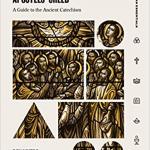John P. Burgess, Jerry Andrews, and Joseph D. Small
A Pastoral Rule for Today: Reviving an Ancient Practice
Downers Grove, IL: IVP Academic, 2019.
Available at IVP and Koorong
By Laura Thierry
What might occur if the particular needs and questions of the role of the pastor in the 21st century were put in creative conversation with the wisdom of the past? What might happen if both then and now were placed in dialogue in such a way that neither glorified the past as a ‘pastoral golden age’, nor dismissed it as irrelevant? What if weary pastors of today could have an accessible point of entry to the wisdom of faithful pastors of bygone days?
If these are questions you find yourself asking, then A Pastoral Rule for Today: Reviving an Ancient Practice is a good place to begin your enquiry. In an act of creative ressourcement, John P. Burgess, Jerry Andrews and Joseph D. Small probe the work of seven pastors from vastly different traditions and centuries. Believing ‘that the Christian past does not constrain our imagination but rather opens it to insights and possibilities for ministry that we have inherited but are not always aware of’ (p. 1), these authors trace a particular practice through their chosen examples, namely, the practice of a pastoral rule.
Considering the distinctive and ever-shifting challenges of the pastoral office within a technological age, and the reality that ‘the pastoral office today is increasingly held hostage to a multitude of competing demands’ (p. 5), the authors seek to look to the grace-filled benefit of a pastoral rule, which they explain as ‘a disciplined way of life that keeps us grounded in the principal calling of a pastor: to be faithful to God and God’s will for us and the people we serve’ (p. 5). Against the noted dangers of distraction and fragmentation that often besiege the pastoral office, a pastoral rule serves as ‘a set of criteria for measuring our faithfulness to the gospel. [It] delineates basic rhythms and practices that define the life of a pastor (p. 6).
Seven ‘rules’ form the main body of the work: (1) that of Augustine with reference to his practice of theological friendship, (2) St. Benedict’s rule oriented towards obedience and prayer, (3) Gregory the Great’s rule of servant-hearted holiness, (4) John Calvin’s practice of the ‘Venerable Company of Pastors’, centering on mutual accountability for doctrine and conduct, (5), John Wesley’s instruction and example in holy conversation, (6) John Henry Newman’s commitment to the pastor’s discipline of serious study, and (7) Dietrich Bonhoeffer’s pursuit and promotion of the practice of being physically present with one another. Finally the authors draw these varied threads together and present their own pastoral rule, drawing the panoply of practices explored into a succinct whole. Each chapter is supplemented with a useful collection of questions for further discussion and a concise and instructive bibliography for further reading.
This book’s primary strength lies in its realistic outlook: it is idealistic without being impossible. It looks back without romanticizing, and forward without despairing. And it places the riches of the past into the hands of a busy pastor in a manner set to challenge without overwhelming. It would be a valuable gift to a young pastor upon their ordination, but a useful read for anyone seeking challenge and encouragement for the pastoral office from the riches of the Christian tradition.
Laura Thierry a PhD student at Ridley College, researching medieval hagiography, Christology, and theology of the body.












